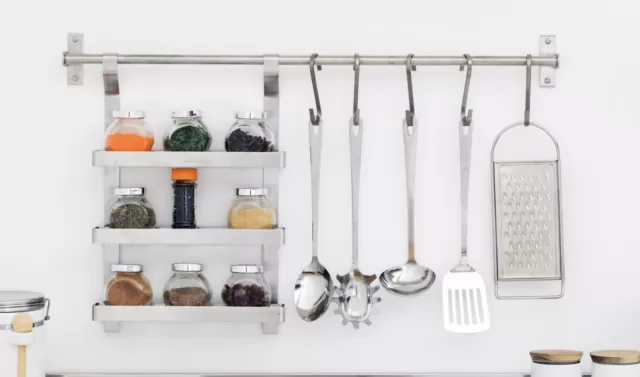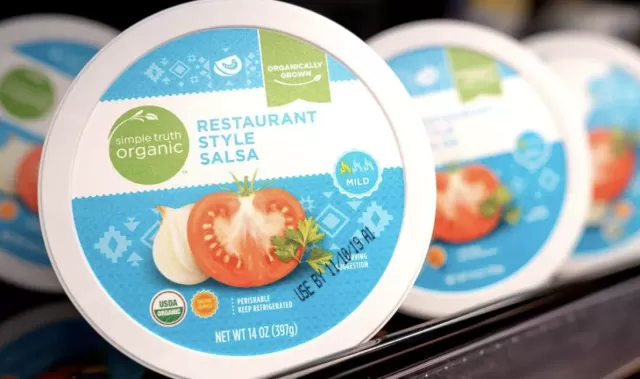Kitchen making your cooking routine more sustainable doesn’t have to be overwhelming. In fact, by taking a few small steps, you can significantly reduce your environmental footprint and save money in the long run. It’s a win-win situation
In addition to maximizing your oven use, there are other sustainable kitchen solutions that can help reduce your environmental footprint. Here are four more ideas:
Reduce Food Waste: Food waste is a significant contributor to environmental problems. To minimize your impact, try meal planning, buying only what you need, and using leftovers creatively. You can also compost food scraps, which can enrich your garden soil and reduce greenhouse gas emissions.
Choose Energy-Efficient Appliances: When purchasing appliances, look for models that are ENERGY STAR certified, as they are designed to use less energy and water. Consider upgrading to energy-efficient models when it’s time to replace older appliances.
Ditch Single-Use Plastics: Single-use plastics, such as plastic wraps, plastic bags, and disposable utensils, are a significant contributor to plastic pollution. Instead, opt for reusable alternatives, such as beeswax wraps, silicone food storage bags, and stainless steel utensils.
Use Eco-Friendly cleaning products: Many conventional cleaning products contain harmful chemicals that can pollute waterways and harm wildlife. Choose eco-friendly alternatives, such as vinegar, baking soda, and castile soap, to clean your kitchen. You can also make your cleaning products using natural ingredients to reduce waste and save money.
By implementing these sustainable kitchen solutions, you can reduce your environmental impact and create a more eco-friendly and budget-friendly cooking routine.
Optimizing Your Oven: Tips for Maximizing its Use and Efficiency

According to Laura Fenton, a sustainability expert and author of the Living Small newsletter, you can optimize your oven’s use and efficiency by utilizing the preheating time.
For instance, toasting nuts or drying breadcrumbs during those 10 minutes can save time and energy. If you’re planning to bake multiple items, try to schedule them so that both oven racks can be used simultaneously.
Additionally, if you have a toaster oven that can perform the same function, it’s better to use it instead of the larger oven, especially if your oven runs on gas. Using a smaller appliance like a toaster oven requires less energy and can reduce your carbon footprint, as some regions of the US electric grid are partly powered by renewable energy sources.
Chopped-Inspired Cooking: Tips for Making Creative and Resourceful Meals with What You Have

Anne-Marie Bonneau, the creator of the Zero-Waste Chef blog and author of a cookbook with the same name, recommends letting the contents of your refrigerator and pantry dictate what you cook.
In most cases, you already have everything you need to prepare a meal. “Cooking in this manner is similar to being on the show Chopped, but without the pressure of time constraints, critical judges, or heartbreak,” Bonneau says.
To spark your creativity, consider picking up a copy of The Everlasting Meal Cookbook by Tamar Adler. With over 500 pages of A-to-Z leftovers inspiration, it includes easy recipes for even the most specific ingredients, such as shrimp shells, forgotten tater tots, broccoli stems, and languishing Brie.
Expiration Dates: Understanding the Truth Behind Them and Reducing Food Waste

According to Dana Gunders, the executive director of ReFED, a non-profit organization that works to reduce food waste, the confusing system of sell-by, best-by, and other dates used in the United States can lead people to discard food that is safe and edible.
In fact, these dates often refer to food quality rather than safety, and there are few consistent standards. It’s important to understand that most refrigerated food is safe to eat as long as it has been handled correctly, meaning it has never been left at room temperature for more than two hours.
Your senses, such as smell, texture, and appearance, are the best indicators of whether or not the food is still safe to eat. If milk smells sour when poured, salsa has started growing fuzz, or meat feels slimy, it’s time to discard them.
Use-by dates, however, should be taken seriously as they are meant to indicate a safety notice. By understanding the truth behind expiration dates, we can reduce food waste and make more sustainable choices.
.
.
*The information is for reference only.